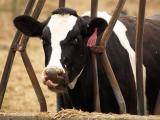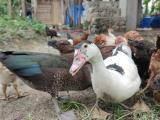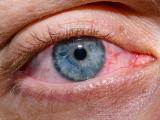Sep 21, 2004 (CIDRAP News) – State Public Health Veterinarian Mira Leslie, DVM, MPH, hopes to greatly expand Washington's disease surveillance network Oct 1 when she speaks at a statewide veterinary meeting.
She will explain how a $75,000 grant from the Centers for Disease Control and Prevention (CDC) lets veterinarians test domestic animals for plague and tularemia at a university diagnostic lab. It's one prong of a statewide biosurveillance project that will include screening of wild mammals as well as pets.
The grant has several goals: gathering baseline data for understanding zoonotic diseases that could be used as biological weapons, identifying emerging infections, improving communication between vets and public health workers, and paying for diagnostic testing, Leslie told CIDRAP News.
Leslie expects to receive samples from healthy and sick outdoor pets from vets in each of 10 regions in the state, allowing health officials to map the distribution of exposure to endemic diseases such as plague and tularemia. In addition to providing routine samples, veterinarians as well as wildlife biologists and other experts can submit the bodies of domestic pets and wild animals with suspicious signs for full necropsy.
The Washington project is one example of a growing national and international movement to link the monitoring of human and animal diseases.
"That discussion about national animal disease surveillance is just beginning," Leslie said. "Some (US states) had programs before bioterrorism and some are implementing things now with bioterrorism funds."
The World Organization for Animal Health (OIE) has encouraged countries to develop and maintain wildlife disease surveillance programs in conjunction with farm animal disease programs, said Thomas DeLiberto, DVM, PhD, with the US Department of Agriculture's (USDA's) Animal and Plant Health Inspection Service (APHIS) Wildlife Services branch in Colorado. And a World Health Organization (WHO) regional director said on Sep 14 that WHO must pay closer attention to animal health because zoonotic diseases will keep emerging.
It's important to assess animal populations, said Tracee Treadwell, DVM, MPH, chief of the epidemiology, surveillance, and response branch of the bioterrorism response program in the National Center for Infectious Diseases at CDC in Atlanta.
More than half of the diseases considered most likely to be used as bioweapons are zoonotic, and they may be seen in the animal population first, she added.
Surveillance efforts are improving, she said. For example, the CDC's Public Health Information Network includes detection and monitoring for bioterror threats. She is pushing for equity for the growing number of veterinary diagnostic labs joining the Laboratory Response Network, which CDC describes as state and local public health, federal, military, and international labs that can respond to biological and chemical terrorism.
"It's very, very important that public health take on a broader definition and be inclusive not only of humans but of animals," Treadwell said. "Ultimately, it affects everyone."
While the trend is broad, efforts vary. The CDC is funding a program at Purdue University's School of Veterinary Medicine in West Lafayette, Ind., that uses an electronic database of animal health information assembled by veterinarians at clinics in PETsMART stores nationwide. Because the database covers many states, it could help identify patterns in the event of an outbreak such as monkeypox, Treadwell said.
Another example is plague monitoring, which has been part of the mission at APHIS since its creation in the late 1800s, DeLiberto said.
Concern about bioterrorism, animal outbreaks, and zoonotic diseases has escalated in recent years, he added. Sep 11, 2001, spurred the unease, as have outbreaks of foot-and-mouth disease, chronic wasting disease, mad cow disease, and exotic Newcastle disease.
In roughly the past year, APHIS has hired 23 wildlife biologists specializing in diseases to assist in surveillance efforts. In addition to developing a national plan for plague and tularemia, DiLiberto said, his agency is tracking feral swine, a potential host for many diseases.
"If we had an outbreak of avian influenza jumping into pigs, we'd already have this surveillance system in place and could adapt it," he said.
Training those who report diseases is also important, said Nora Wineland, DVM, MS, co-leader for the National Center for Animal Health Surveillance and Centers for Epidemiology and Animal Health, part of APHIS veterinary services.
"The eyes and ears are the producers, the veterinarians, and our action at the federal level is to help with educating them on knowing what to look for and what to report," Wineland said. Her office encourages states to bring their reportable disease lists in line with OIE's.
Public health efforts have gotten a boost from bioterrorism-related grants, sources said.
"The terrorism dollars have done a great service to public health in terms of providing staffing and getting us to see things a little bit differently," said the CDC's Treadwell.
Agencies need more funding for animal disease diagnostic labs and to strengthen the link between human health and animal health at the federal level, she added.
Boosting animal disease surveillance was not high on Lee Myers' priority list on Sep 17. Myers, DVM, the Georgia state veterinarian, was trying to figure out how to recover the surviving chickens from five poultry houses flooded by Hurricane Ivan's storms.
"You address an incident the same from our purposes whether it's bioterror or not," she said. "The different component is law enforcement, and it's still not clear how we'll work with them. What authorities do they have? How do we train them to prevent spreading disease?"
"In an ideal world, we would like to know the prevalence of a lot of [animal diseases], but it's expensive," Myers said. "A lot of focus has been on bioterrorism, but most states are charged with emergency management in any emergency . . . whether hurricane, biological agent, truck wreck, regardless."
Myers cited a variety of challenges to collaboration between the veterinary and public health realms: improving computer technology, speaking a common language, and understanding jurisdictions.
Gail Hansen, DVM, MPH, president of the National Association of State Public Health Veterinarians, said veterinary–public health collaborations require a shift in thinking. "Public health traditionally has not worked with vets in private practice very much, except with rabies," she said.
Teamwork could mean faster identification of zoonotic disease outbreaks, because animal tests have outpaced their human counterparts, and also because a sick animal may be euthanized for testing, Hansen said.
But identifying the best solutions will remain a local task, she added. "Every state needs to make decisions about how to shore up their public health."



















